Anne Le Troter
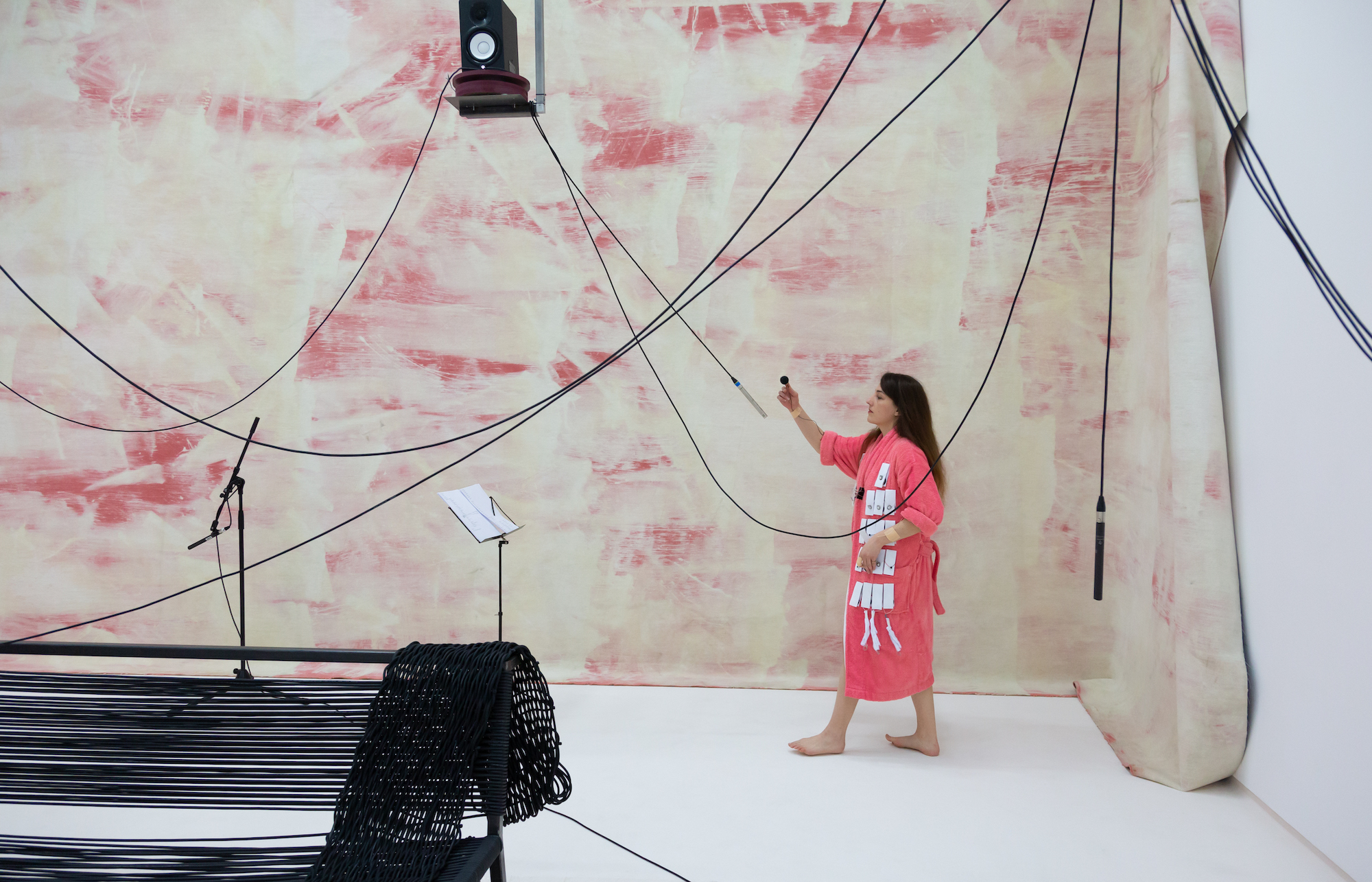
In her latest series of works, presented for the first time at galerie frank elbaz, Anne Le Troter returns to her familiar practice of sound installation and writing, while continuing her in-depth investigation of the body, whatever it may be. Part performance, part installation, part vinyl(1), Le Corps Living Room describes the desire, or even the need, to curl up in the voices of others, but also to desert, to take refuge in a forest that looks domestic, to turn this ecosystem into “a plant recording booth”, to become one with it, to cross the path of the Pornoplantes(2)once again, to breathe, perhaps.
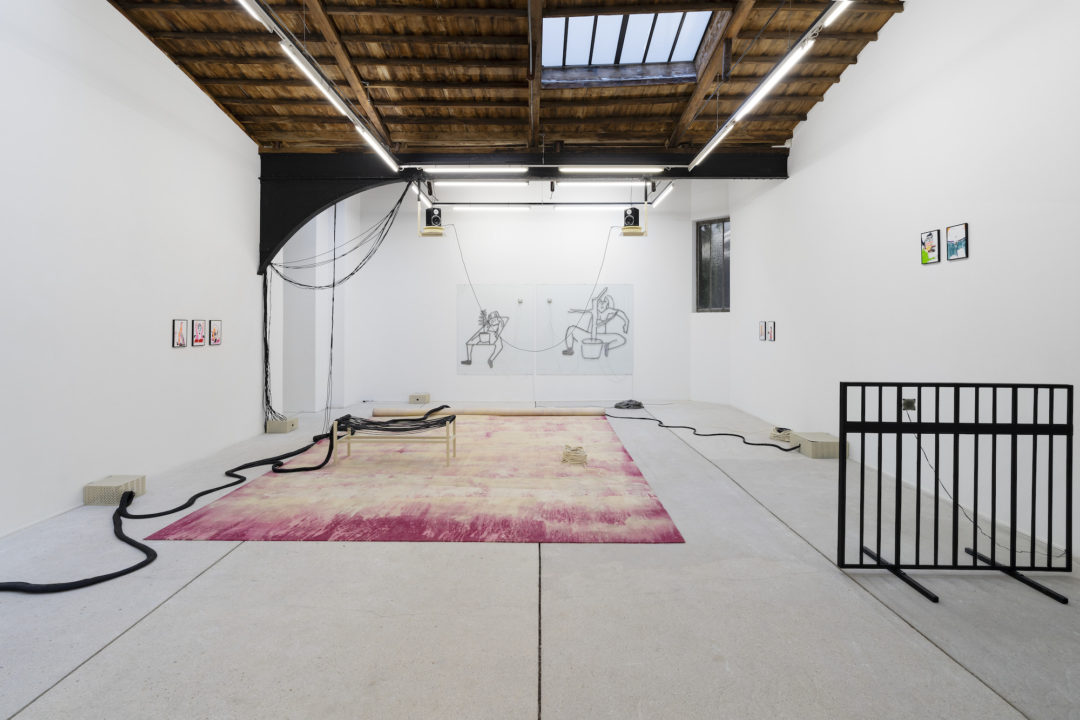
Vue de l’exposition “Les Pornoplantes”, Galerie frank elbaz. Photo Claire Dorn.
Carrying the voices of others
During her first residency at Villa Kujoyama in 2020, Anne Le Troter felt the urge to make clothes that, like the musical cards of the 1990s, would contain the words of people dear to her. This choir of voices, worn directly on the skin, is like a polyphonic envelope, the inspiration behind the performance – presented at the Ménagerie de verre, among other venues – that accompanies Le Corps Living Room installation. An object of care and comfort, the piece is first and foremost an intimate experience, the vibrations of which are felt in the body of the person wearing the jacket. Conceived as an “exhibition-growth” that you can take with you, this prosthetic garment bears witness to a study that Anne Le Troter has been conducting for several years on the physicality of sound. The artist’s work aims to make the conductive nature of a sound wave palpable, and may also echo the tin structure that sinuously invaded the floor of Bétonsalon during her solo exhibition in 2022(3). A fluid form diffusing the words of the people being recorded to the four corners of the room, it also suggested another way of propagating and physically apprehending the medium of sound. The reflection that infuses Anne Le Troter’s work is also reflected in the furniture she creates to encourage listening conditions. The leitmotif of the seats, made of braided XLR cables, which can be found in many of her past installations, offers those she calls “listeners” the possibility of making what they hear tangible. This desire to make sound literally tangible is expressed through this acoustic garment, in which the artist’s body becomes the receptacle and support for the voices of others.
The speaking and the speaking
As she likes to say, Anne Le Troter writes for voices. Her texts are designed to be spoken and embodied, usually by several people. Although we can’t put a face to these speakers, the artist nevertheless gives substance to a group of individuals. The telephone interviewers, the ASMR artists, the people forced to apologise publicly – these are all hybrid groups, both within and outside the world of work, whose words she has been able to collect in the course of her various projects, in the course of her investigations into the linguistic procedures and usages used by different socio-cultural categories. In her work, she is often concerned with naming, and thereby making audible, these anonymised collective bodies. Anne Le Troter is particularly interested in the issues of care and health, and the possible links between the artistic and medical worlds. She has carried out research on dental prosthetists and a database of sperm donors, as well as on artists who have participated in major medical advances. Those she calls ‘volunteers’ – including the artists William Brockedon, who invented the tablet, and Louise Hervieu, who created the health record – also represent the condition of art workers. Some of these voices and themes are dear to Anne Le Troter’s heart in Le Corps Living Room, a new sound piece that reflects on labour and performance.
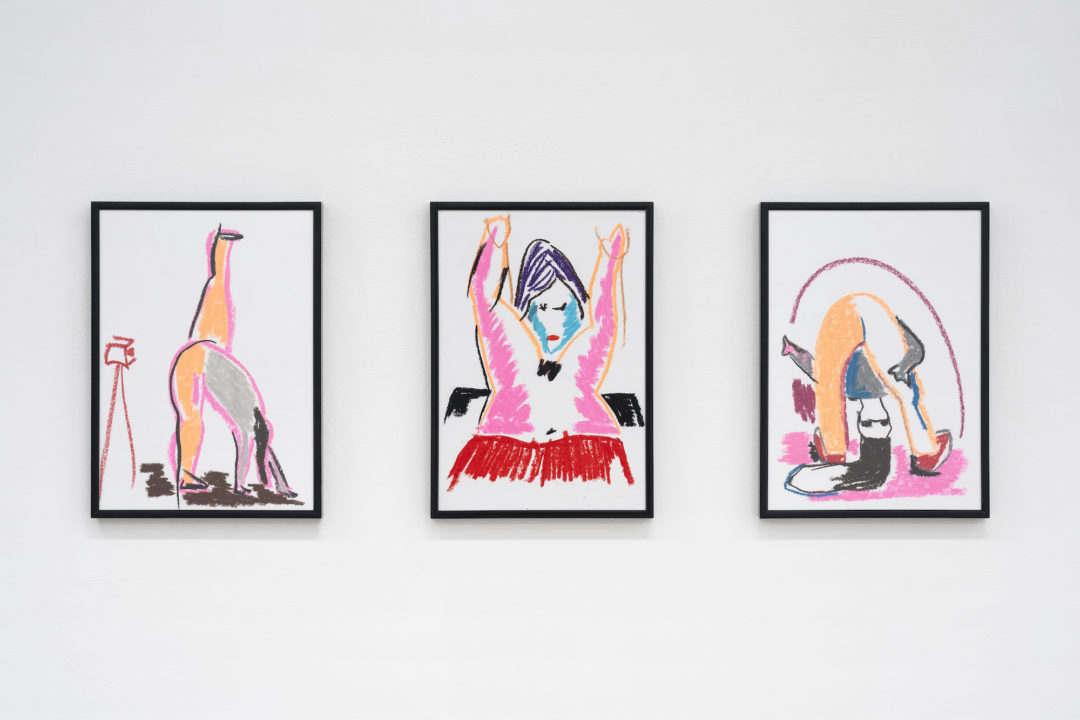
Photo : Anne Le Troter
A forest flat to build
To radically break away from the recording studio – an essentially restrictive environment – Anne Le Troter decided to go into the forest with a small team to record Le Corps Living Room in the open air. Grating and desperate, the sound piece broadcast in the heart of the frank elbaz gallery is primarily intended as a re-enactment of an extract from Antic Meet (1958), a choreography by Merce Cunningham featuring a dancer whose body becomes a chair and a resting place for the bodies of others. In turn, the protagonists of Anne Le Troter’s piece recount how their bodies slowly become furniture in this domestic forest. The words flow out in a kind of jubilant outlet as the limbs seem to stiffen, reduced to useless consumer objects. Chairs, picnic tables and the dog’s toy are all enviable statuses for people living in a society awash with capitalist injunctions. The almost sexual pleasure of turning into a coffee table seems to lie in a disconcerting balance between painful physical effort and absolute mental rest. Frozen in a form of regression that is not a regression at all, the speakers ironically express their desire for servility: “Who doesn’t like to be carried, moved, dragged around like furniture(4)?” The sense of alienation that emanates from this sound piece, which tackles the issues of retirement, the economy, solitude and work, echoes the norms of language that the artist has often sought to study and subvert in her audio montages. While Anne Le Troter’s analysis of an ultra-codified language was a means of highlighting its authoritarian dimension, in Le Corps Living Room it serves as a collective outlet, a zone of resistance; and becoming a chair is an act of disobedience to ‘extract’ oneself from society.
Getting laid with the flora
This human salon, temporarily set in the middle of the woods, is rooted in Pornoplantes territory. Explored over three chapters recited by Anne Le Troter in the manner of a nursery rhyme, this entity (part character, part sexual practice) came into being during the artist’s residency at the Bergerie nationale de Rambouillet, the first French institution to introduce controlled animal reproduction. In this sound piece, naturally reminiscent of Le Corps Living Room in its writing, the artist tells in the first person the story of a being whose sex falls off and grows back according to the seasons. In a vulgar, even obscene tone, the story of the pornoplantes depicts a world in which we enter into communication with the plant, to the point of having seductive or carnal relations with it. In this way, Anne Le Troter’s universe “de-hierarchises” inter-species relations, inventing a territory in which humans, objects and plants cohabit. Despite her humorous prose, a certain violence pervades her work. Allusions are made to sadomasochistic sexuality, with incantations uttered in chorus when it comes to holding a position at all costs: “Test my resistance, put yourself in a good position, and above all crush the things that are always underneath you(5)”. Anne Le Troter’s imagination can be both cruelly funny and clearly disillusioned.
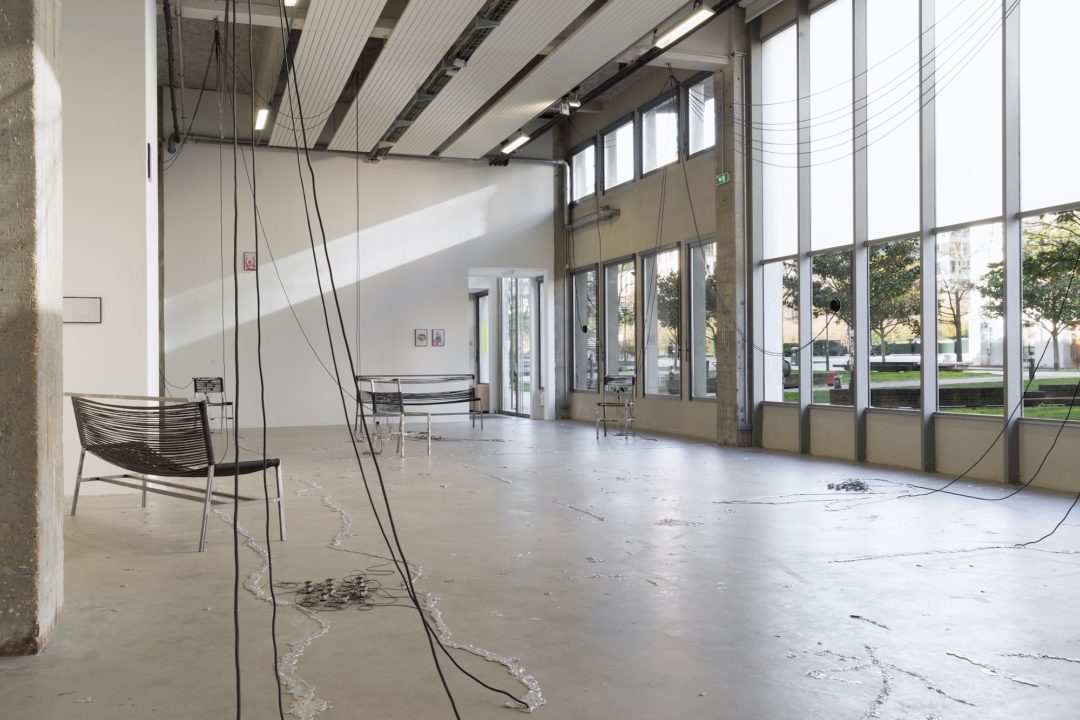
Bétonsalon – centre d’art et de recherche, Paris © Antonin Horquin.
A geography of the spoken word
Anne Le Troter’s pieces are like weeds that grow, overflow and proliferate like organic elements. In a relationship of filiation, her works develop into sprawling bodies of work that germinate one on top of the other, as if by contamination.
His latest projects are less about analysing the mechanisms of language than about a formal interest in language itself. Writing, rather than collected speech, plays a predominant role, and the text, which drips into our ears in the form of a verbal torrent, delivers a disturbing message that is at once trivial, caustic and disillusioned. A turning point seems to have been reached even in the production of Corps Living Room, born of conversations with plants, leaves turned into microphones and parasitic noises linked to the outdoors, testifying to a definite desire to go into exile for a while in the forest, “now that the very intimate though impersonal experience of breathing has taken on an obviously political dimension6“.
There is nothing in Anne Le Troter’s studio. Yet it is her ability to make a sound object palpable, as much as to make visible the subjugation of bodies through language, that forms the basis of her artistic practice. Through the profusion of words that assail us, in a setting that is most often deliberately minimal, Anne Le Troter creates a space for the words of a multiple body – individual or generic – to resound. In a constantly renewed use of the oral form, she persists in summoning, swallowing, projecting and dressing herself in the voices of others.
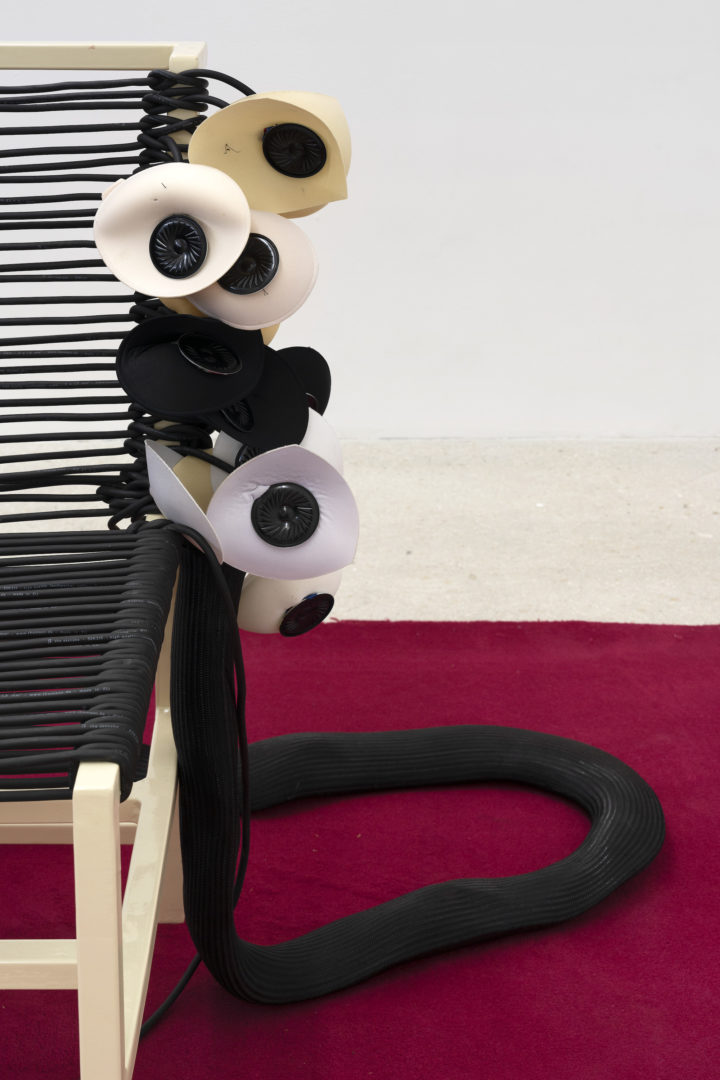
90 x 202 x 50 cm.
Photo: Claire Dorn
1 Anne Le Troter, Le Corps Living Room, vinyl, LP, Paris, DUUU, 2024 (à paraître)
2 Installation sonore en plusieurs chapitres réalisée en 2021.
3 Anne Le Troter, « Les volontaires, pigments-médicaments », Paris, Bétonsalon, 18.2-23.4.2022
4 Le Corps Living Room, 2023, installation sonore, 30 minutes.
5 Le Corps Living Room, 2023, installation sonore, 30 minutes.
6 Marielle Macé, Respire, Paris, Verdier, p. 4.
______________________________________________________________________________
Head image : Anne Le Troter, Vue de la performance Même pas de mots dans l’installation “Parler de loin ou bien se taire », pièce sonore, 20 min. Installation, matériaux divers, dimensions variables. Production Le Grand Café –centre d’art contemporain, Saint-Nazaire et Nasher Sculpture Center (US), Collection Centre Pompidou / Copyright : Hervé Veronese
Related articles
Iván Argote
by Patrice Joly
Laurent Proux
by Guillaume Lasserre
Diego Bianchi
by Vanessa Morisset

